2021 Update… Spring is upon us in New Jersey, the ‘Garden state,’ and signs of life are exploding outside. I’ve done quite a lot of tree planting over the years, and while everyone has their own techniques, I find there are a few basic rules & principles that always seem to apply.
Best Season for Tree Planting?
Plant in the spring or fall — But if you have a choice, shoot for the fall.
Intense heat is absolutely terrible for transplanting trees, and by targeting the fall you start right off with cool days that evolve casually into the dormancy of winter. You’ve arranged for the most stressful months of summer to be as far away as possible when your trees will be much more established and best prepared for the heat.
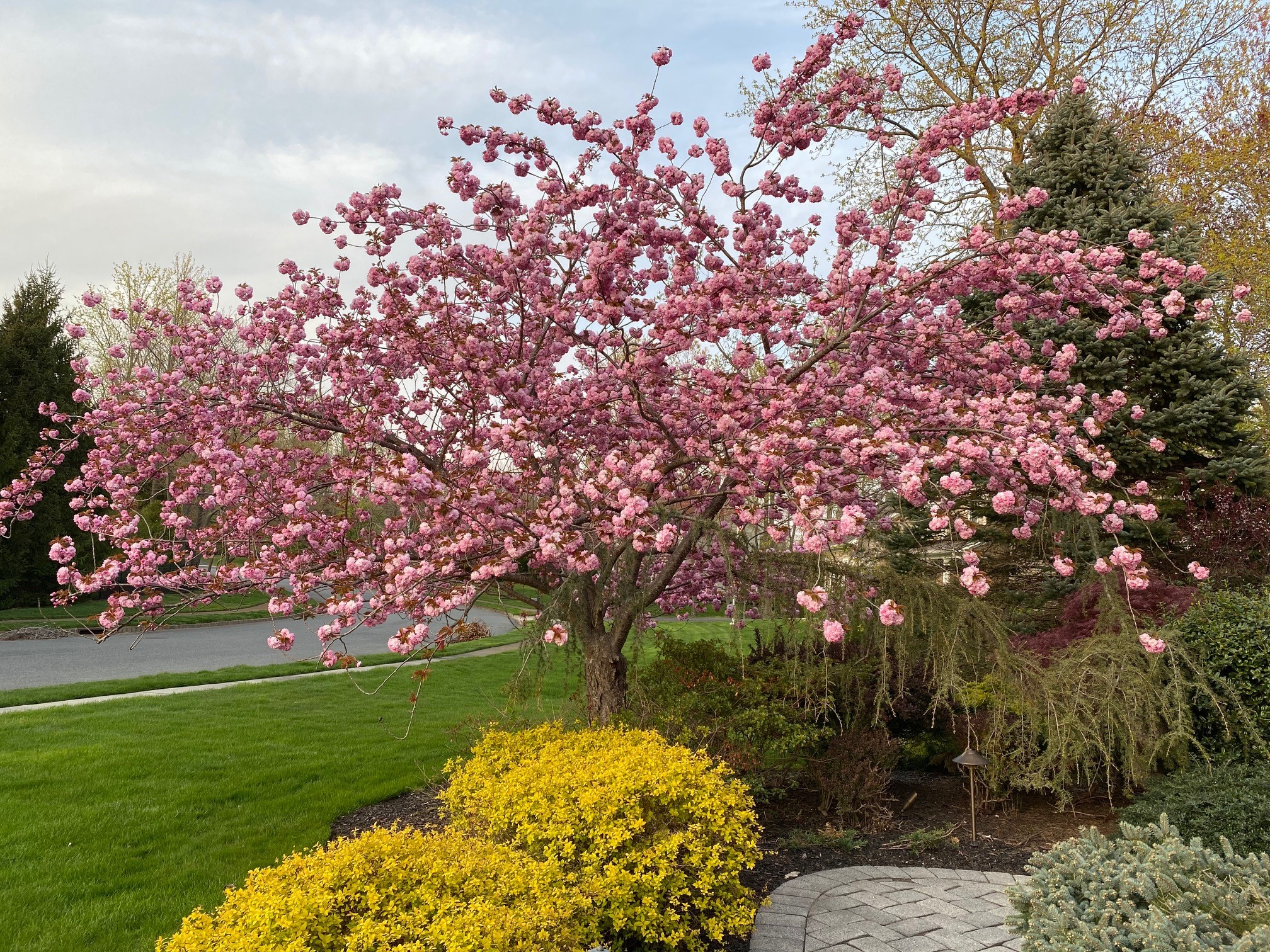
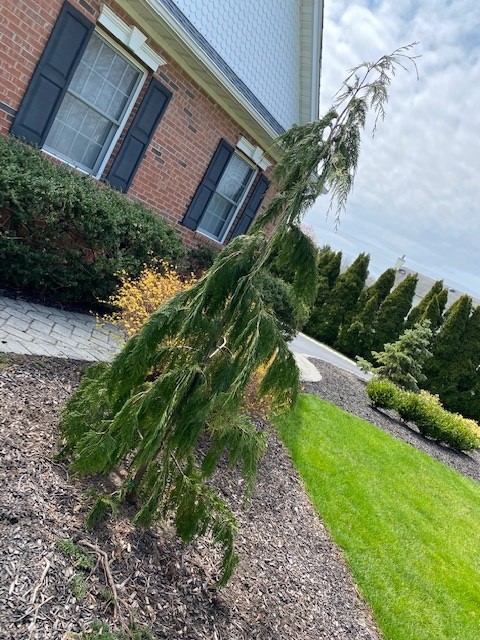
Plus, on financial fronts, you can often negotiate much better prices on landscape trees at nurseries in the fall as they’re trying to liquidate inventory. If you’re willing to give up a warranty, you should be able to get the price down very significantly: 40-50% is not an unreasonable expectation. But you have to ask for this from the owner or manager; it’s not something you should expect to be offered to you. The more you’re buying, the more you can negotiate.
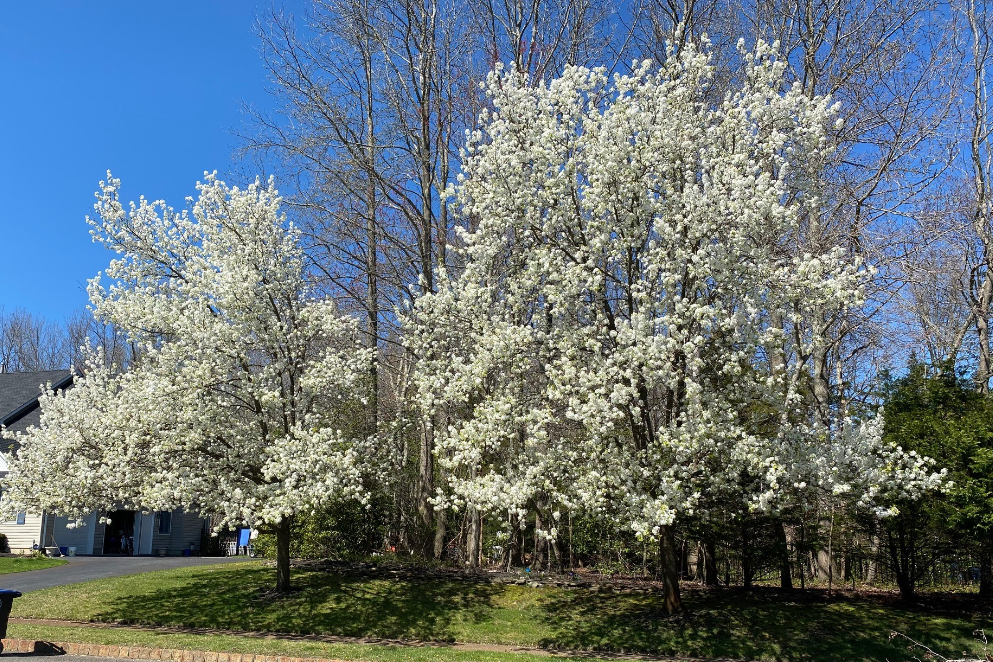
I bought the 7 blue atlas cedars pictured below (the tall trees on the left) on an unseasonably cold rainy/snowy fall afternoon a couple of years ago. By buying trees like this together right at the end of the selling season, I was able to negotiate a full 50% off.
Getting them home, it turned out, was the much bigger problem as they were each HUGE…

Hole Digging & Soil Preparation: Trees & Shrubs
When planting trees or shrubs, you want to dig your hole so that it’s bigger than the root ball, then back fill it with a mixture of topsoil and a high quality peat moss. (You can skip the peat moss if you have a nice rich top soil.) The reason for the larger hole is to allow the roots room to grow initially into the softer and nutrient-rich back fill.
When sizing your hole – you want to anticipate dropping the tree (or shrub) in and having the top of the root ball just slightly above the ground. If you sink the plant in too far, it could die: the non-established roots need easy access to oxygen — plus, if you sink the ball too far down, you could also end up with water collecting in the hole after it rains, rotting the roots. Certain trees (like Cherry trees) are very prone to root rot. So, to reiterate: dig the hole to a depth to ensure the top of the root ball is near-level to the surface, but ever so slightly above!
Then fill the bottom of the hole with water – and make a nice “mud soup.”
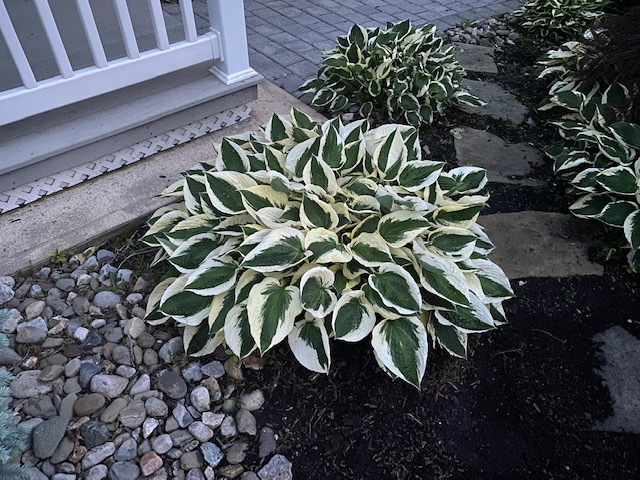
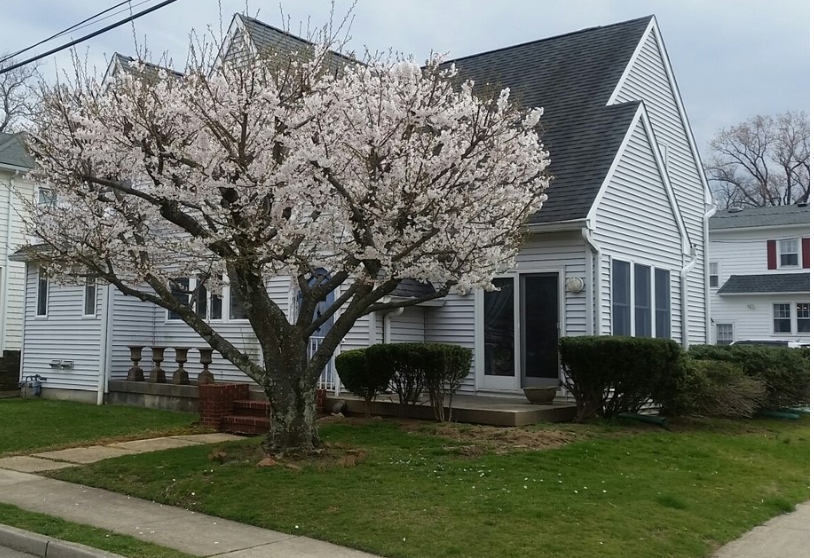
Tree Planting Equipment & Tools
When dealing with large anchor or ornamental trees, use a hand truck or get access to heavier equipment like a Bobcat to move the trees to the edge of your hole. I know you 22-year-olds are thinking, “I’m 22 and I can bench 250 lbs – I don’t need a hand truck.” Here’s the thing: this isn’t about testosterone – it’s about physics. If you twist your back trying to move a 150-pound tree (mostly root ball weight) through soft soil or grass, you can really hurt yourself. Period. Take prudent precautions when moving heavy trees.
You can see my hand truck in the background of the shot below. The Arborvitaes pictured each weighed well over 100 pounds though they may not “look” like it. Looks can sometimes truly be extremely deceiving.
I was pretty sore at the end of this job.
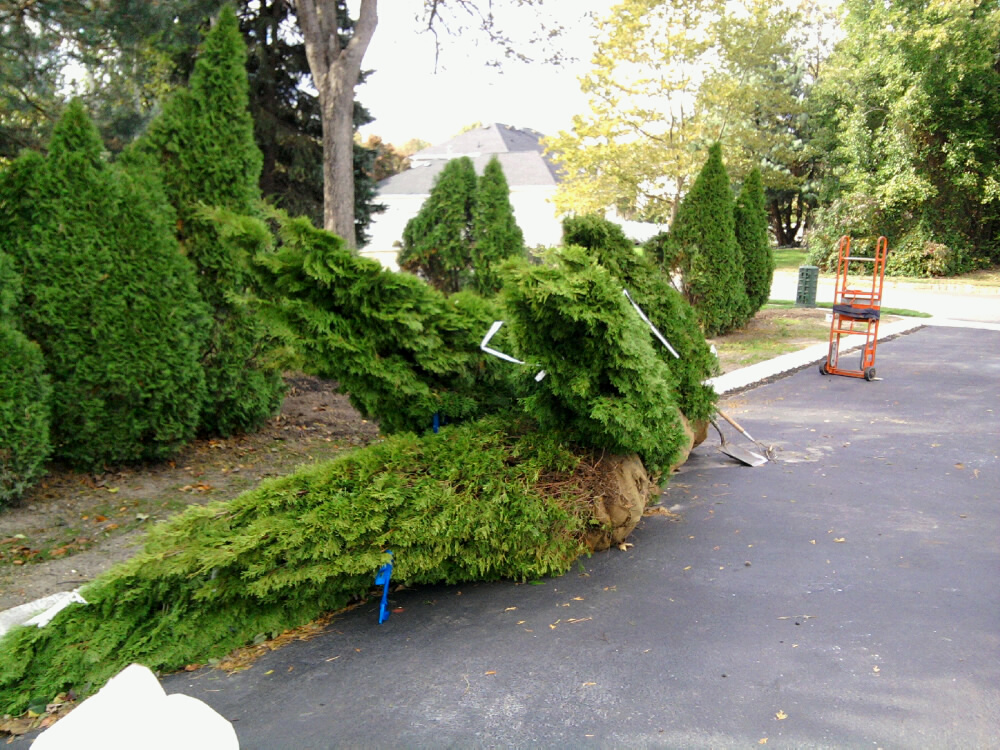
Contrast this job now with the much bigger 7 blue atlas cedars I showed in the first photo. There was no way I could plant (or even move) those 15-foot giants by myself. In a case like this, you simply need to plan on hiring a local reputable landscaping company to help.
Those massive trees took three guys with a fork lift, a flat bed and a Bobcat several hours to transport and to plant.
Getting Your Trees and Shrubs into the Ground
With your tree at the edge of the hole, position it with the best side forward and let it drop in carefully. If it’s a big tree, you’re probably not going to able to get it out of the hole again, so you have one shot at this. Once in the hole, tune the positioning accordingly.
If your trees are in a wire “basket” and wrapped in burlap, do not remove either. I always remove the twine at the top and loosen the burlap – peeling it down just a couple of inches. Sometimes I’ll even cut razor slashes in the burlap to help the roots find their way out – but you leave the burlap and basket in place.
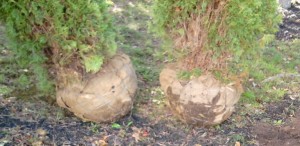
Now, fill in the hole with the dirt you removed, using your hose to jet water in to ensure the soil is really getting deep into the hole and securing the tree — but again, take care not to bury the top of the root ball.
Finishing Touches: Mulch & Staking
Cover the top of the ball with loose mulch. It’s decorative, but also very healthy for the establishing tree. It will provide nutrients as it decomposes, and it will naturally retain moisture – which is particularly important in hot weather. Wet it all down nicely.
If your tree is on the larger side, consider staking it up for a year or so. Will this look pretty? No. But it will ensure the tree has additional stability as the roots begin to take hold.
You want your tree to be straight as it takes root — you don’t want the winds to knock it sideways.
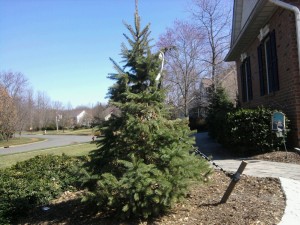
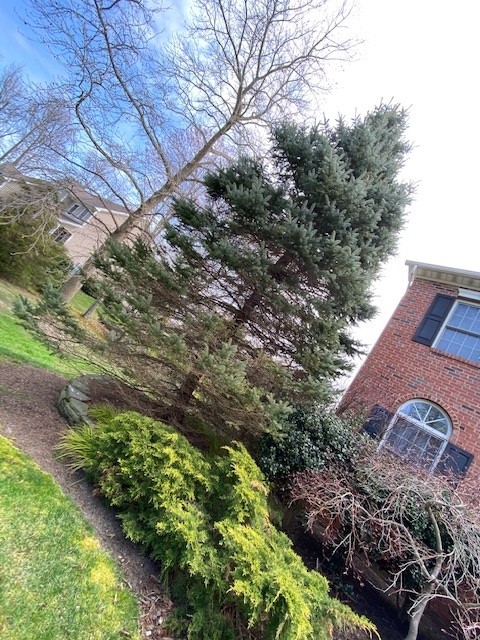
The Truth about NJ and the Jersey Shore
Now, putting trees aside for the moment, I do want to say one more thing here — New Jersey was dubbed the ‘Garden State’ for a reason.
Most areas are absolutely beautiful: the beaches, the pine barrens, the farms and the stables. Sometimes, I think we get a particularly bad rap from much of the world. I was in a bar in Paris some years back when I overheard some people speaking English. (It’s really easy to pick out English when everyone else is speaking French.) In any case, these two gentlemen where *making fun* of New Jersey, and neither were from the States. (They weren’t from France, either.) I thought about it, and decided I would risk an international incident. I walked over, introduced myself, and proceeded to explain some of the “positive attributes” of life in New Jersey.
One of them eventually bought me a drink.
Do we have some smoke stacks? We do. Do we have the Sopranos? Frankly, I don’t know… but that was an awesome show, right? Do we have the “Jersey Shore” people? Now there, I will state with 100% confidence… primarily as tourists!!

Hi Mark
We are just moving into Autumn so a couple more months of fertilising left and then winter for us. My camellias have been hopeless this year so have just got some camellia fertiliser in the hope that they will fatten up – they just seem to sprout a couple of bits that grow a few feet tall but won’t seem to thicken, even though I pruned them right back last August.
I have one pot bound shrub/small tree that has lived on the verandah for many, many years and after not watering it one very hot period, I promised it that if it survived I would plant it so your tips will be very helpful, especially about keeping the roots a little above the ground so that they can get oxygen. We took out the garden pond so I plan to put it there. I think I will aim for Easter when I have a bit more time to grapple a heavy pot down a flight of stairs and dig a big hole!
As Owner/Manager of a full service landscape company, I found this article was right on. Excellent instructions… Landscaping can be very costly. Following these types of instructions will allow you (as a homeowner) to protect your investment. I always inform our customers of the importance of the proper installation and maintenance. Some trees with large calipers in size can get expensive. The instructions in this article can help not only save you money, but keep your property looking groomed. Well done!
Joe Ciaglia
Ciaglia Landscape Design, LLC